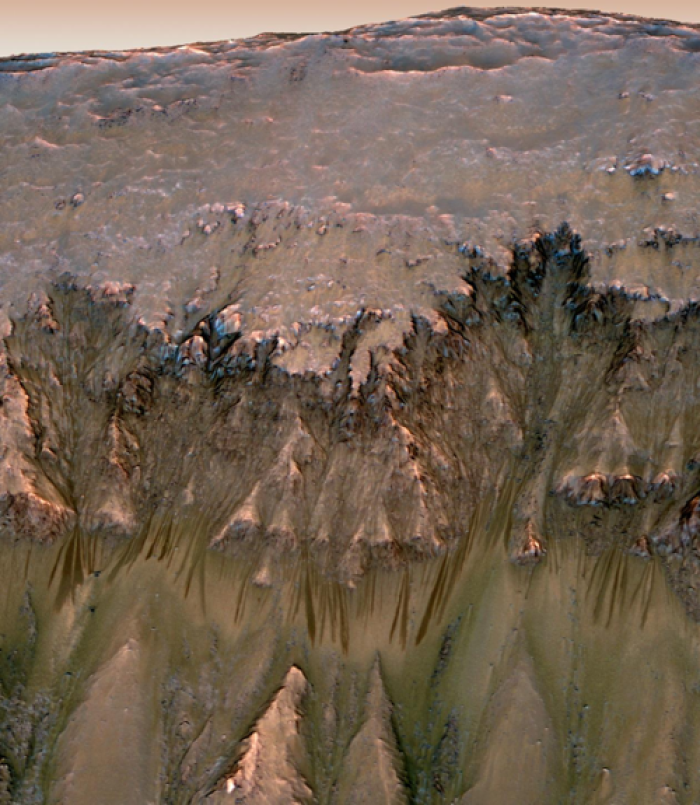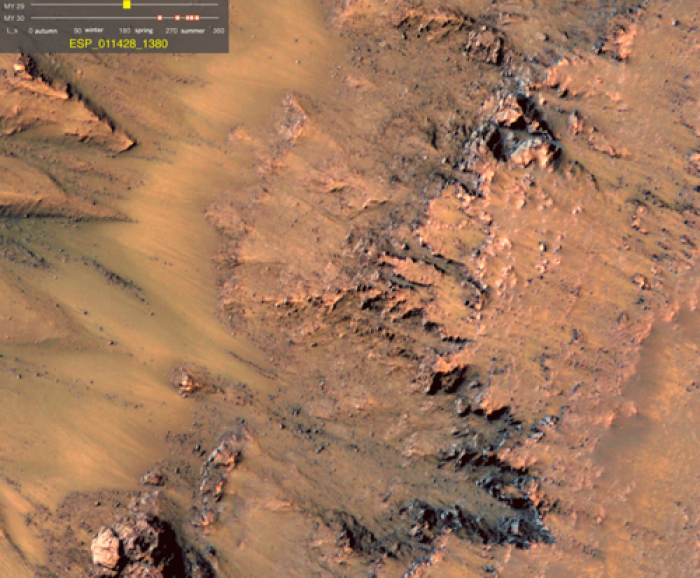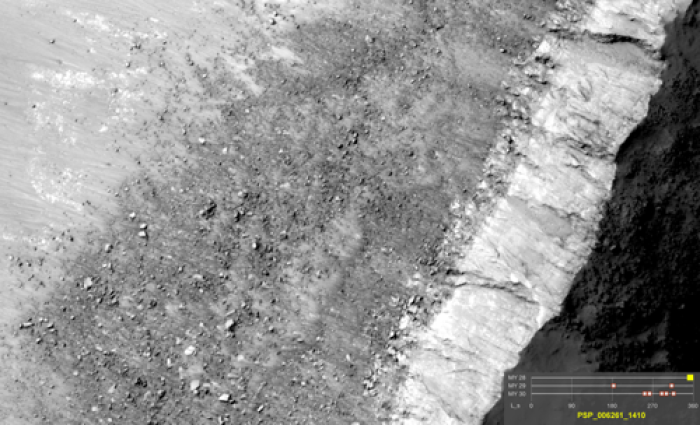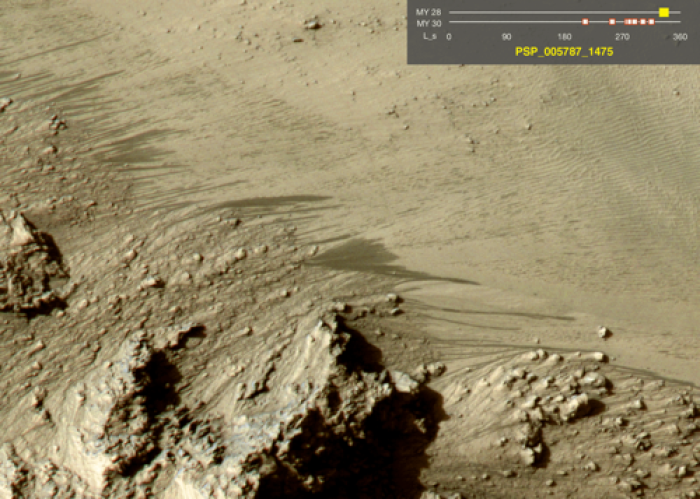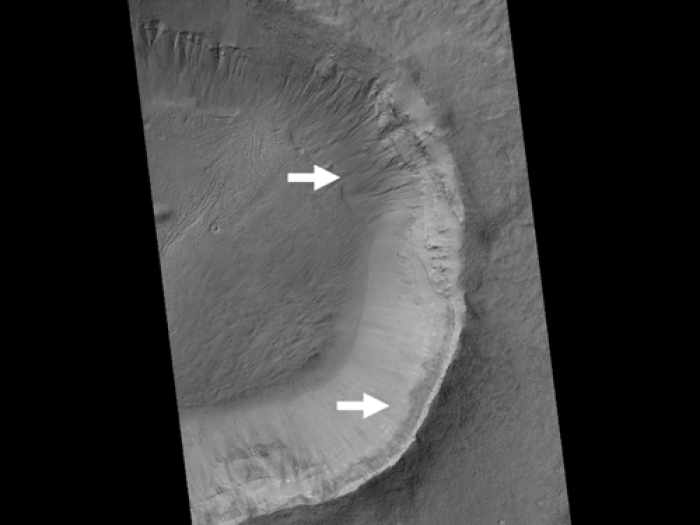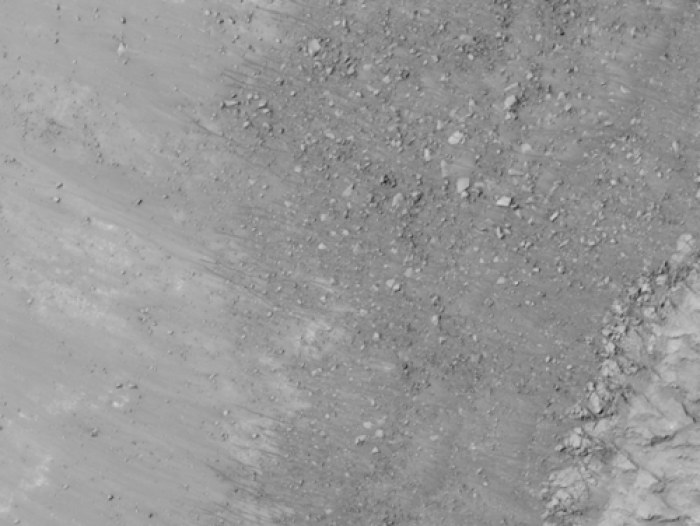Scientists Claim Flowing Water May Be on Mars (PHOTOS)
NASA scientists said Thursday they have discovered the strongest evidence yet that there could be water on Mars.
Using the High Resolution Imaging Science Experiment (HiRISE) camera on NASA's Mars Reconnaissance Orbiter, scientists were able to capture images of tell-tale signs of water within a crater called Newton, located at Mars' equator near its southern hemisphere.
The images detail depressions and scratch like markings that indicate there is water flow currently on the red planet.
"The best explanation for these observations so far is the flow of briny water," said Alfred McEwen of the University of Arizona, lead author of the report published in Thursday's edition of Science journal.
Scientists have also discovered that the evidence of the purported water seems to disappear in the winter and come back in the spring, suggesting that Mars only has flowing water in its warmer summer months.
Compared to Earth, Mars is 50 million miles farther from the sun, with significantly lower average temperatures. Water has been confirmed on Mars since 2002, but it was discovered frozen at its polar caps.
The locations that have been explored are Mars' most prime locations for liquid water. While summer highs can reach 70 degrees Fahrenheit at the equator, average temperatures are significantly lower, but still in a range that could allow for flowing water, about 32 degrees Fahrenheit for noon highs to -75 degrees Fahrenheit for overnight lows.
"We know Mars has a lot of ice, but this is the first time we've seen the potential for liquid water," said Arizona State University geophysicist Phil Christensen.
"What makes these new observations so interesting is they occur at much lower latitudes [closer to the equator], where temperatures are much warmer and where it’s actually possible for liquid water to exist."
According to the research team, seven possible water flow locations have been confirmed, with the possibility of up to 30 more. Some locations may have up to 1,000 separate waterways.
McEwen reminds that the discovery is not definitive proof that there is flowing water on Mars, but it is the best explanation.
"We haven't found any good way to explain what we're seeing without water," he said.
"I think it’s going to be laboratory experiments on Earth that give us the best confirmation or refutation."
The discovery has renewed NASA's interest in Mars in the wake of the recent conclusion of its 30-year space shuttle program. Plans to build a spacecraft after to transport humans to Mars by 2030 are already in the works.
